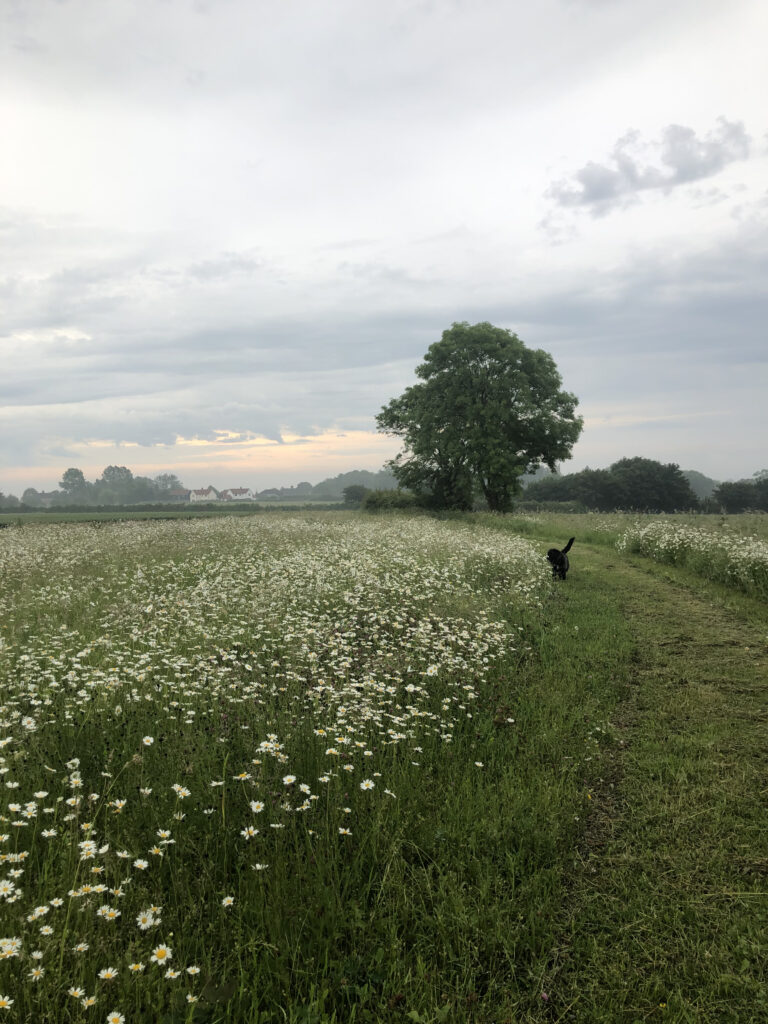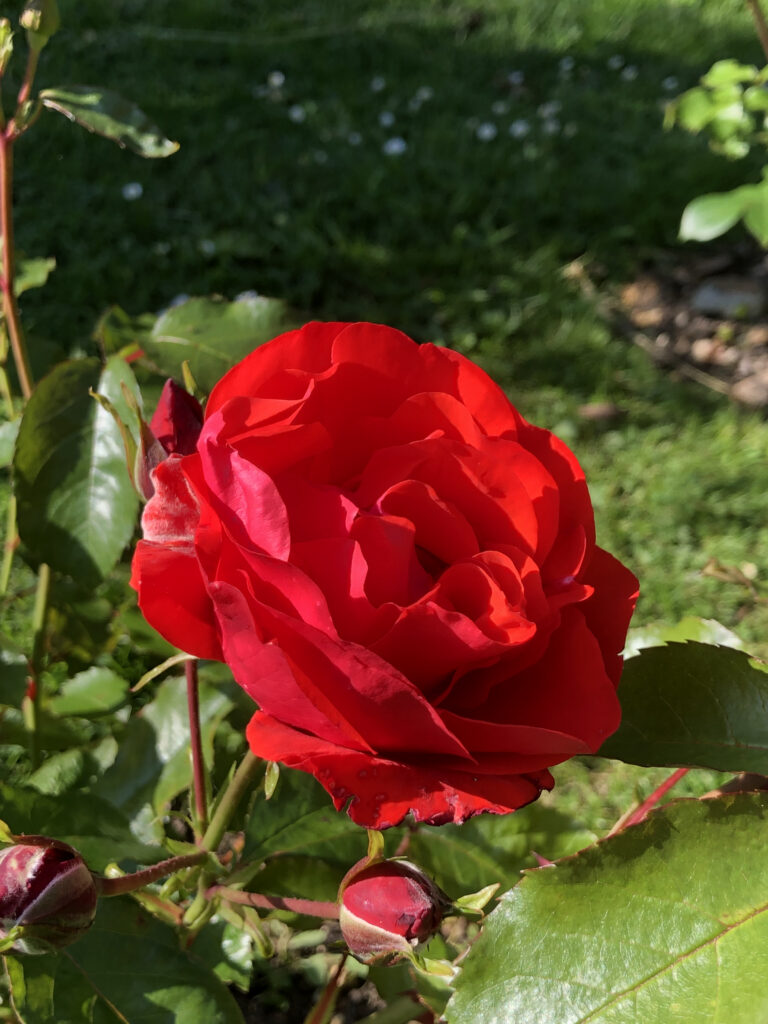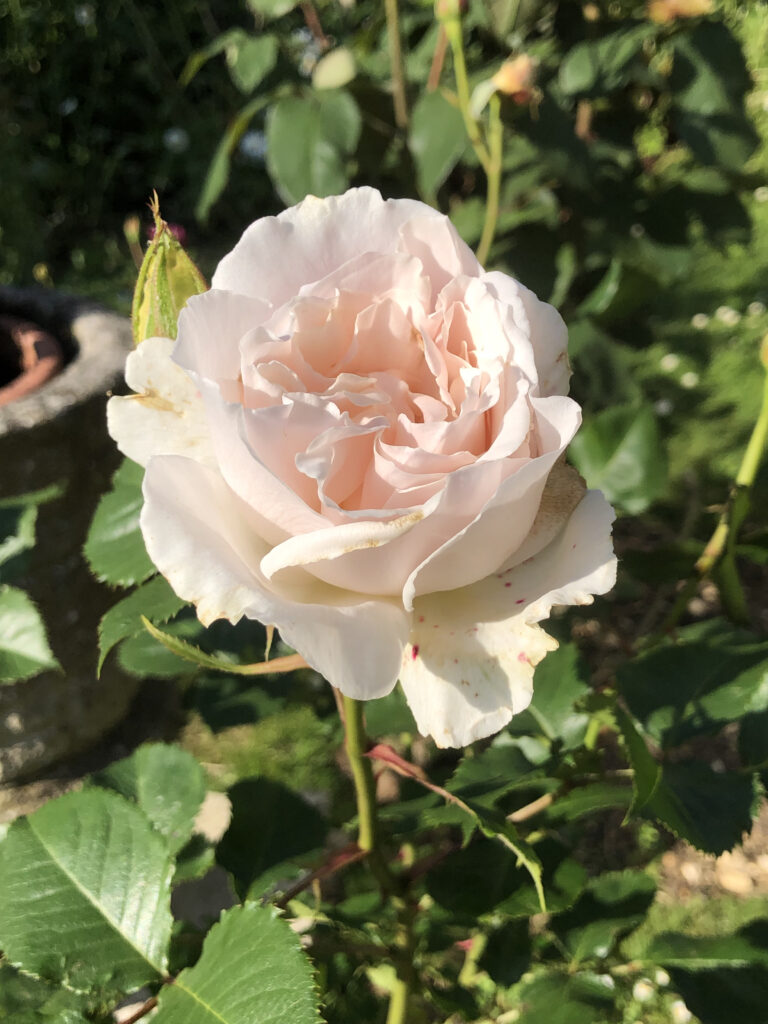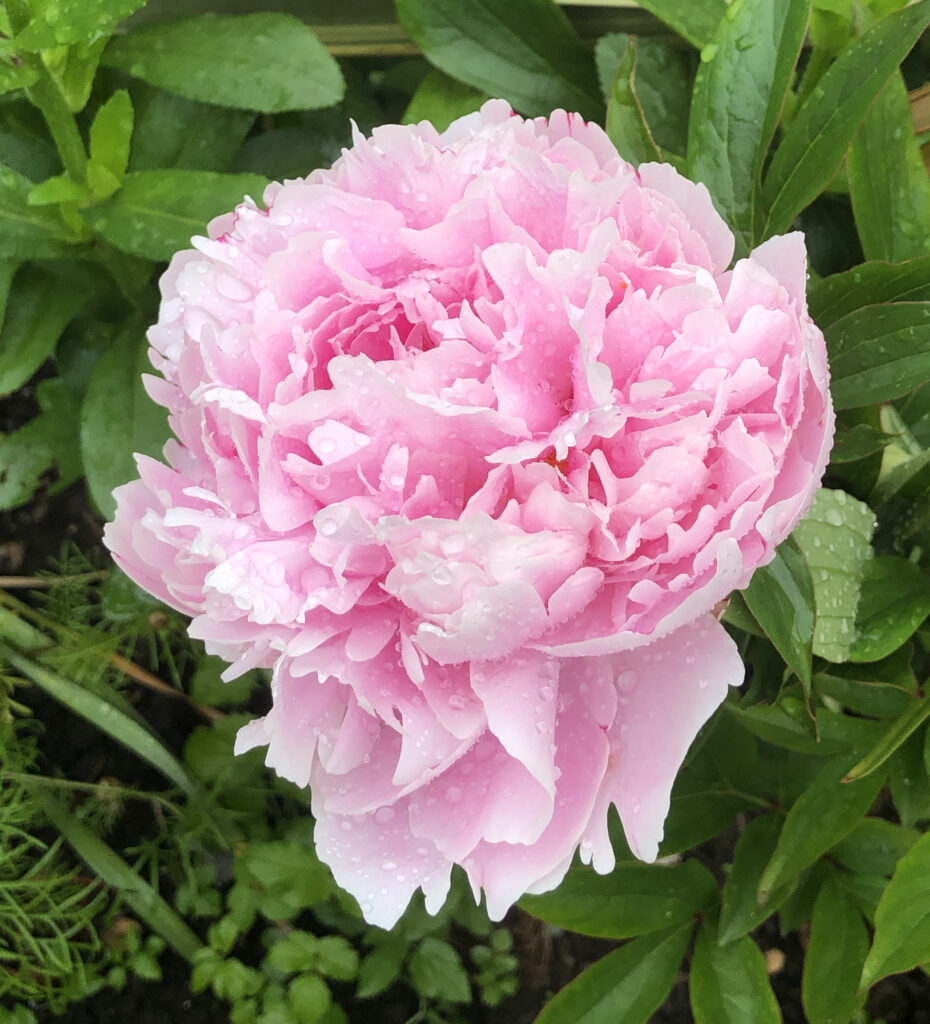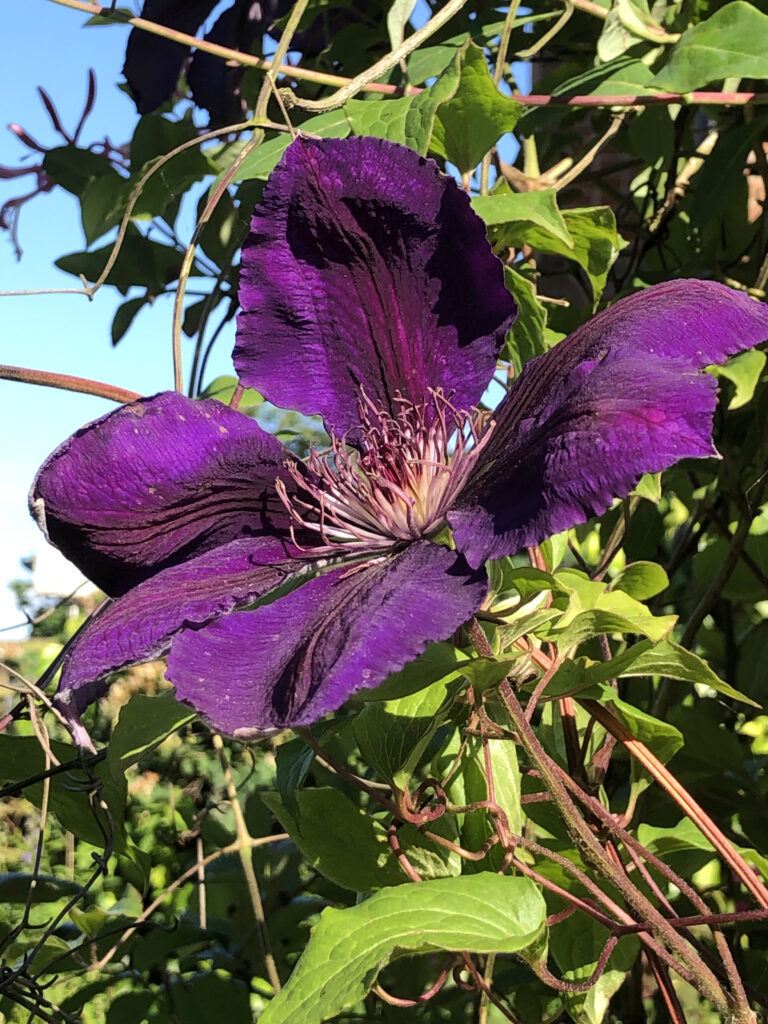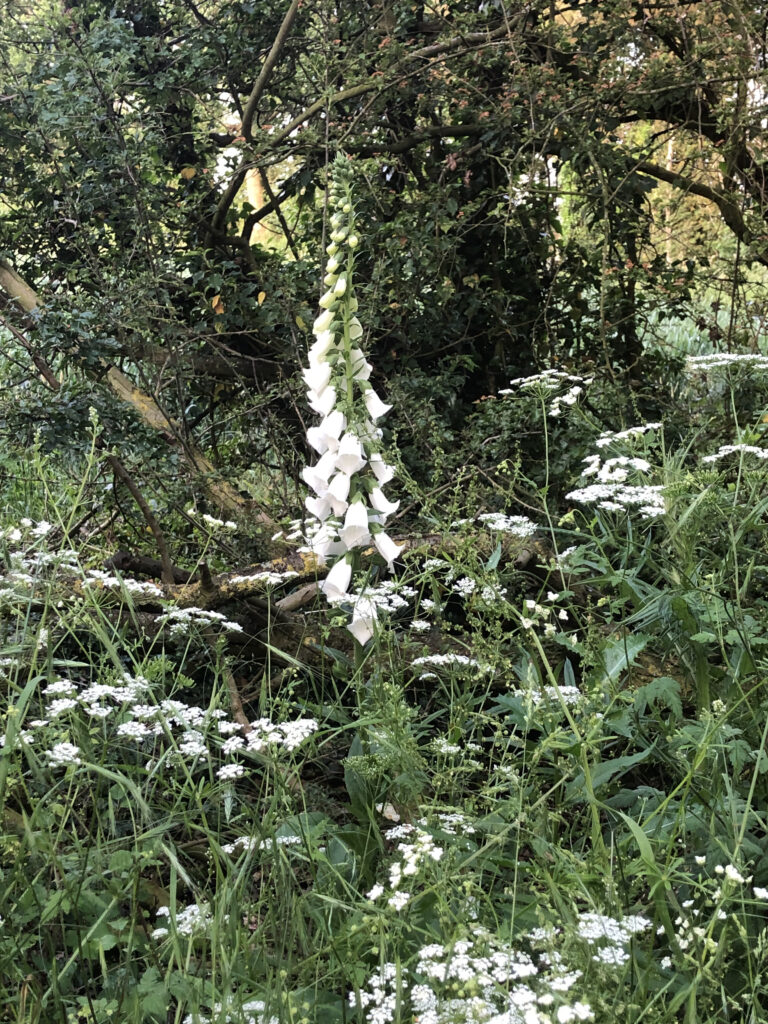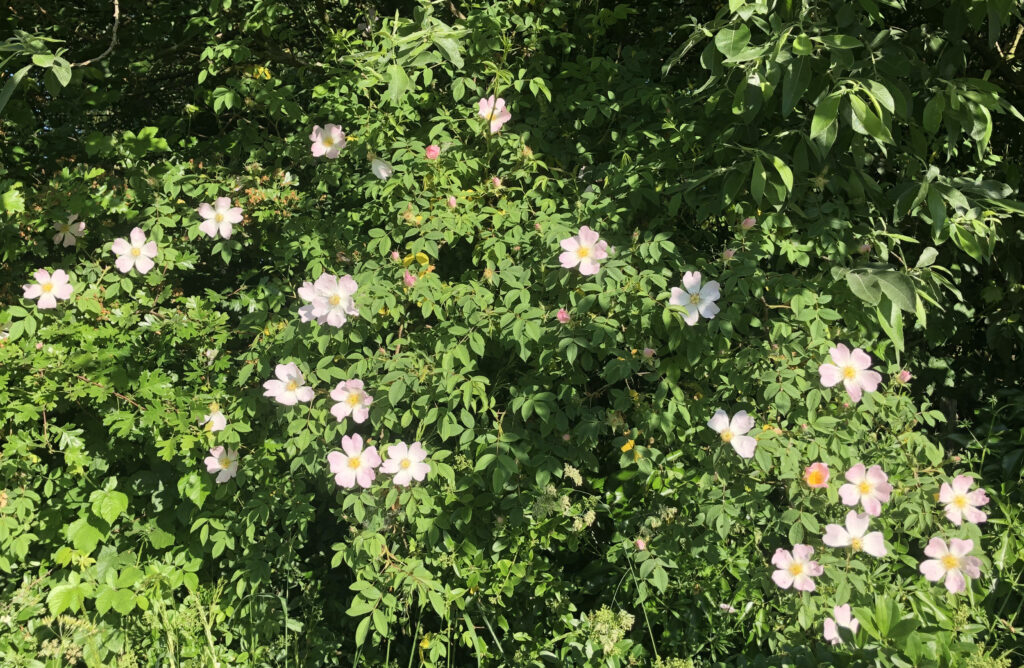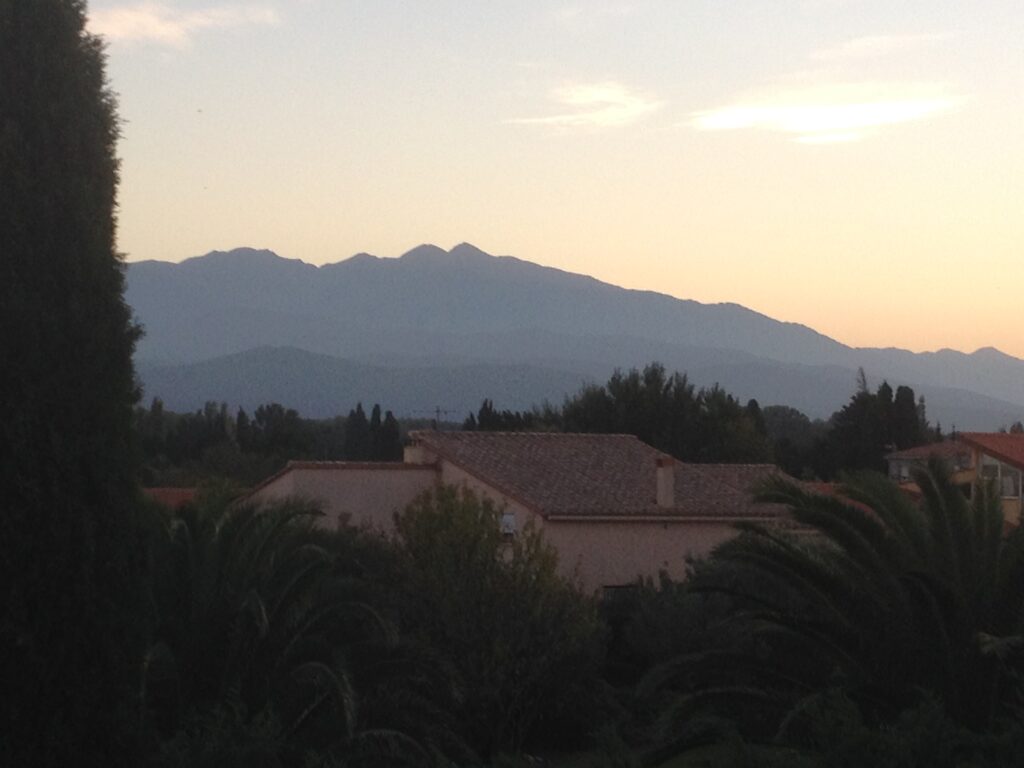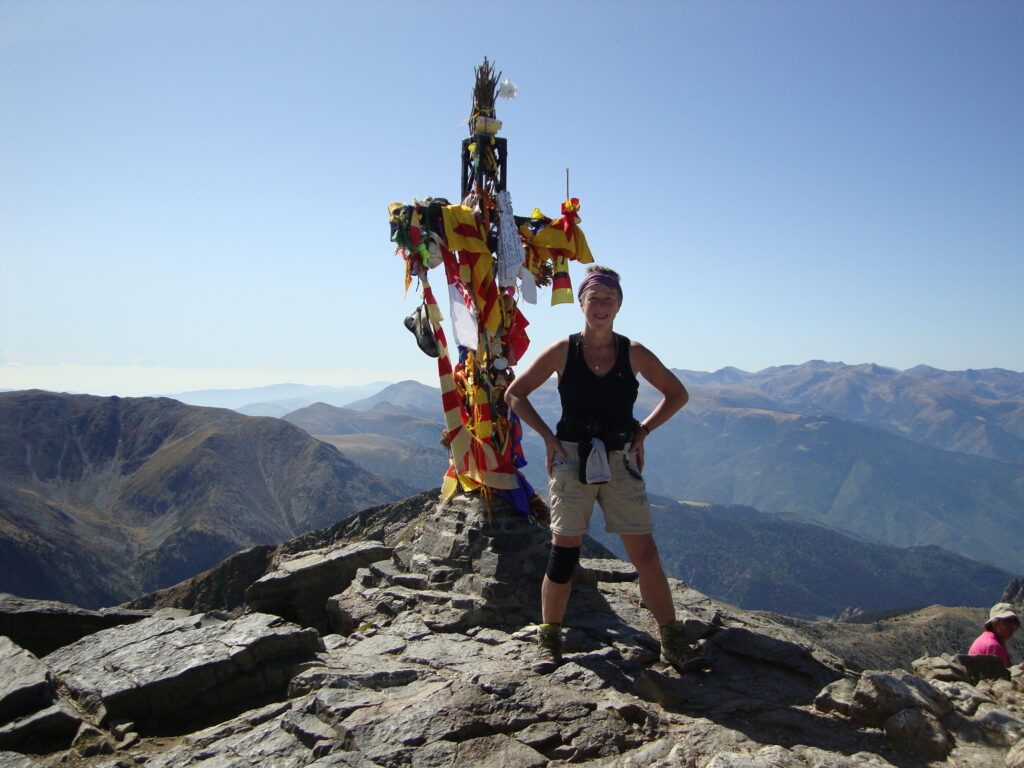
Dunwich beach at 5.30 on a morning just short of the summer solstice, the sun up over this most easterly point for more than an hour. A premonition of the day’s heat hangs in the air, and beneath the still sea the lost city sleeps in peace. A grey seal shuffles down the shingle to the water’s edge. The dog stops, taken aback – what kind of creature is this?
Two weeks, dear reader, we had two weeks of summer, the sky a bright bowl of light, each day warmer than the one before. Two weeks, a thunderstorm, and back to drear dark days and rain. A friend posted these temperatures taken in southern England on the days of the winter and the summer solstice.

During that precious interlude of heat and light nature at last sprang into life, and colour flooded our world, wild flowers vying with cultivated garden blooms in beauty and vibrancy.
Our cold spring has created one of the most intense hay fever seasons I can remember, with grasses seeding all at once. Anecdotally I hear – and agree – that this scourge (for the non-sufferer I need to say this is not just a few sniffles; it means wanting to claw your eyes out; it means sweating and shaking; sometimes even a real fever) has become far worse and more debilitating in the past decade or so – another effect of changing climate. At its worst, for me, antihistamines don’t begin to touch it. NHS guidance says “Avoid pollens.” The dog says “I need long walks through the fields every day.”
And this explains why sometimes we get up with the dawn, and go to the coast for an hour or so away from chest-high seeding grasses. The dog cavorts in the shallows. On our way back along the beach towards 7am we see brave souls swimming in a North Sea whose June temperature barely reaches “bracing”.

Midsummer, and the solstice is past, and we begin that slow drift towards shorter days. I never see the feast of St John the Baptist on midsummer day, a traditional quarter day, celebrated here. All over Europe St John’s Eve is marked by the Fires of St John, Christianity having taken over the pagan rituals of the longest day, the warding off of evil by the fires which also serve as a holocaust to guarantee the harvest.

Few places can honour the tradition of St John’s Fire more than Catalonia, where La Flama del Canigó (the Flame of Canigou, the sacred mountain of the Catalans) is bound inextricably with both the culture and identity of this region. I know; I lived there.

On 22 June a group of young people take material for the great fire and carry the sacred flame, which has burned all year in the Casa Pairal in Perpignan, to climb the 2784m peak, where they light the fire and spend the night. Then they run the flame down the mountain, signalling the lighting of fires in every town and village on the night of the 23rd. There are fireworks, there is food, there is music, there is wine. When sufficient of the last has been imbibed the young, the lithe and the limber jump the fire. In my tiny village the then mayor, aged in his 80s, was known to demonstrate – if not his virility – then his enduring agility in leaping the flames, to the consternation and strong disapproval of his wife.
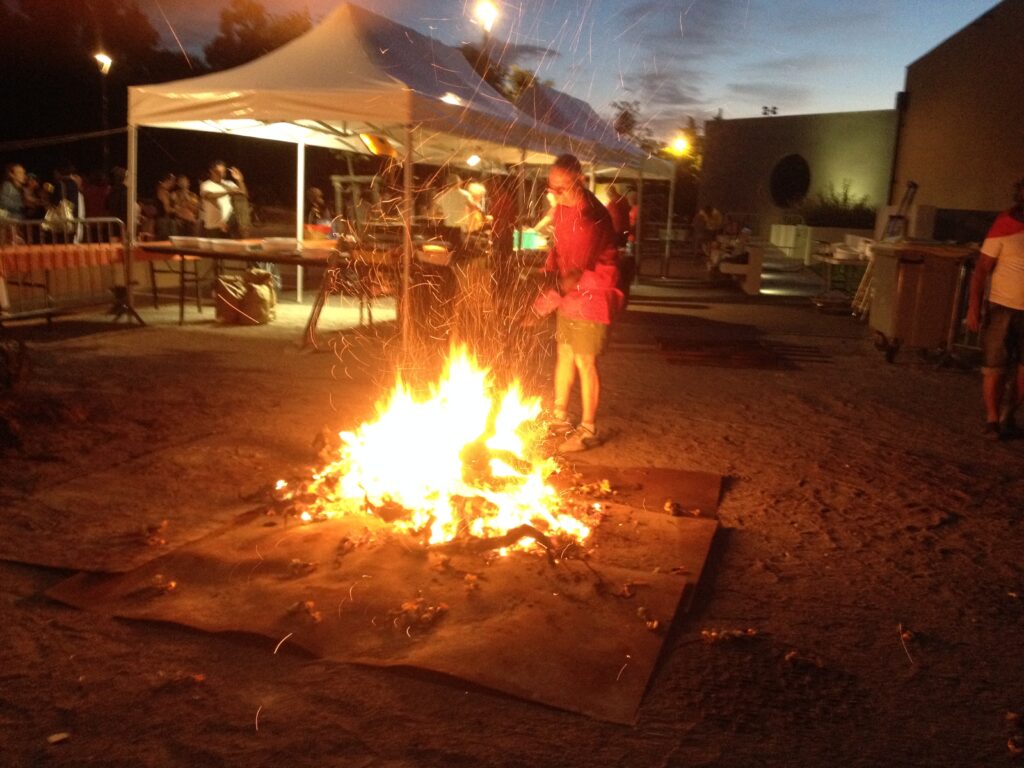
Even after circumstances had brought me back to England I spent many summers in French Catalonia, some of which were to take care of the house of a friend unavoidably absent at Her Majesty’s pleasure. The house had an unrivalled view of Canigou, and the fire on the peak was visible on that magical night. I have climbed Canigou three or four times with friends, not the “easy” way from the north, but via the dreaded “Chimney” from the south. I am not good with heights and steep drops, but – looking back – these were the best of times.
Which brings me to the matter of hiraeth. I suppose advancing years must engender this longing for what has been, a wistfulness for what is lost and can be no more. I wrote recently of my desire for one more long walking pilgrimage and the adventure and freedom of the ancient paths. And now, writing of Canigou, nostalgia for a place I called home for a while. More than that: my learning, culture, and language have been focused on France since my mid-teens. A cruel combination of Covid, Brexit and increasing age mean that this attachment is severed. My fluency has gone, and I can only dream of what was, and quote Villon: Où sont les neiges d’Antan? Or – more aptly in Catalan – on són les neus del Canigó?
Hiraeth lends a warm sunset glow to times and places of the past. If we examine these with a more honest eye we know that these too were not free from trouble or pain. But maybe we see that they offered us a future which too is now past.

Some who read this will be prompt to offer me a preachy “Count your blessings.” They can spare their breath, for I am well aware how very lucky, and blessed, I am here in Suffolk in midsummer, in my little house, with my garden, chickens, cat – and a mad young(ish) dog.
